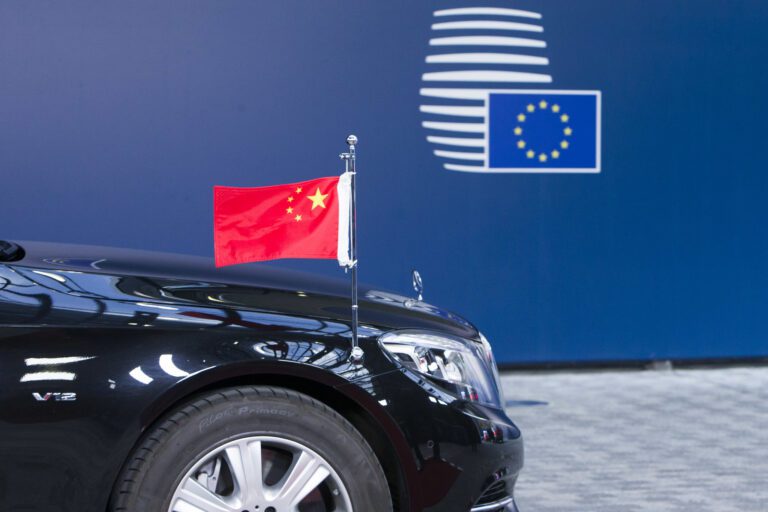
Not so long ago, the 17+1 cooperation format appeared to be expanding and consolidating, admitting an ‘old’ EU member state, Greece, within its ranks. Yet, in a sudden shift, three participants have left the platform over the past year and a half, while others might yet follow. Others, like Romania, seem to be satisfied with keeping the format half-alive out of inertia.
The Rollercoaster Format: N+ 1
In its larger Belt and Road Initiative (BRI) endeavor, China wishfully glanced towards a complicated area of Eurasia, seeking to create – and emulate – a new type of regional cooperation. Central and South Eastern Europe appeared as potential ground for implementing a model of international relations that goes beyond Beijing’s preferred bilateralism, a heterogeneous zone within and outside the borders of the EU which could be approached in a different manner.
A foothold for Beijing’s influence, a loose network of ‘friends’, a financial club of the not-so-rich. All paths were on the horizon for the format, without a clear doctrine or a formal objective. Initially, all seemed to go on as planned for China, with the format being neither extremely successful, nor stumbling upon insurmountable challenges. Rather, the 16+1 became a ‘low-cost learning instrument’ both for China and the participant countries, allowing all the involved entities to understand how future cooperation outside the boundaries of EU-led initiatives might be shaped and how it could evolve into the much advertised ‘win-win’ pattern.
In 2019, a considerable boost of status was conferred to the format when Greece joined as the first ‘senior’ EU member-state. It was a (positive) signal both to the more reluctant participants and to the larger EU audience that China’s appeal is growing and maturing in the region, irrespective of Brussels’ manifest discomfort.
Fast forward a couple of years later and the landscape appears fundamentally altered. Lithuania dropped out from the format in 2021. Estonia and Latvia followed suit in 2022, with other countries considering treading upon the same path.
What Went Wrong: The Perils of Asymmetric Cooperation
In international practice, such rapid development is rather uncommon. The usual fate for the not-so-successful formats of cooperation is continued inertial existence, although devoid of any content. However, the China-CEEC platform proved to be a different type of beast.
While never managing to rise to the envisioned goal of collaborative multilateralism, the cooperation format accommodated a loose network of direct state-to-state relations with Beijing, bringing little to the table as compared to bilateral links.
Nonetheless, the main recipients of Beijing-led projects usually fared within the ranks of known China-friendly states: Serbia, Hungary, Greece. The enhanced cooperation to boost connectivity took the – somehow modest – form of modernizing the Belgrade-Budapest railway, in a bid to link Beijing’s footprint in the Piraeus port northward through North Macedonia with Central Europe and beyond. But not even this project proved to be a landmark success, open for everyone to see and admire, having lagged behind schedule. As far as 2022, almost eight years after the concept was operationalized, the railway is still work-in-progress, with an uncertain future ahead.
Other projects have been offered as an example of the format’s utility, such as the Peljesac bridge in Croatia, built by a Chinese consortium, although this bypass of Bosnian territory was actually funded by the EU and went through the usual public bid in an open competition. Another example came with the inauguration of a 60 km section of the Serbian E-763 highway – eventually projected to link with Montenegro – but not without criticism for cutting (administrative) corners and neglecting environmental regulations.
Such a less-than-modest track record of implemented projects, coupled with the Montenegrin troubled highway saga, already started in 2021 to raise attention regarding the overall efficiency and usefulness of the format itself. While the participants were customarily represented by heads of state at the China-CEEC reunions, the level of participation was downgraded, with a record number of six states – the Baltics, Romania, Bulgaria and Slovenia – present only at the minister level. In addition, the 2021 summit also marked a premiere in failing to adopt the ‘Guidelines’ and rather settling for a renewed ‘Activity Plan’.
In this context, for a fair share of participants – especially for EU member states – it appeared that the format brings more diplomatic headaches than economic benefits. Its loose nature and asymmetric spreading of goodwill dividends towards the actors that play along China’s narratives, turned some of the once enthusiast members to political apathy, while those already reluctant turned to an outright rejection of the format.
And, thus, in the span of a year, the 17+1 turned into 14+1, losing all its Baltic constituents. A diplomatic and economic row between Lithuania and China followed the former’s retreat from the format, with the bilateral relations witnessing a degradation not seen in recent history. On the other hand, that was a chilling lesson for Beijing who, so far, chose not to go down the same confrontational road with Estonia and Latvia. Instead, it has practiced a rather discrete form of damage control and blaming the United States’ alleged pressure for these countries’ decision to quit the format.
A Romanian Perspective: Neither All In, Nor Outside
In between the two polarized groups of participants – supporters vs. dissenters – an ample bloc of inertial actors consolidated. Romania is a foremost example.
While initially enthusiastic about the format during Prime Minister Victor Ponta’s term in office, which marked a brief period of opening towards Beijing, the country’s engagement gradually declined, hitting rock bottom in terms of representation and willingness to take part in Chinese-backed projects.
Initially, in the 2013-2015 period, a growing number of MoUs were signed between the two governments, reaching values as high as $ 10 billion. A leading field of cooperation related to energy, especially in developing/modernizing power plants. The flagship project was to develop Units 3 and 4 from the Cernavodă nuclear plant, a deal agreed in 2014 between the Romanian national company Nuclearelectrica and its counterpart, China General Nuclear Power Corporation. This was echoed by similar undertakings in regard to the Tarnița-Lăpușești hydro plant, the Rovinari thermal power plant and the Mintia thermal power plant.
With the demise of the Ponta government and due to a lack of action by both sides, the envisioned ‘golden age’ of economic ties between China and Romania never came to fruition. Some of the projects were simply postponed and left aside, with technicalities invoked, while others – such as the Cernavodă nuclear reactors – were expressly terminated in regard to Beijing and offered to other developers, with a different type of geopolitical pedigree (United States, France, Canada).
Although usually cordial in its diplomatic relations with China, without any hints of discontent or animosity, Romania was the first country in the region to unequivocally take a formal stance in regard to Chinese presence in the development of the 5G infrastructure. In August 2020, the meeting between the presidents of Romania and the United States resulted in a Joint Statement arguing that the two countries “seek to avoid the security risks that accompany Chinese investment in 5G telecommunications networks.” A couple of months later, PM Ludovic Orban stated that “with respect to 5G, [China] cannot be our partner.” It was game over for Chinese tech companies in this part of the telecom market.
The trend appeared clear. Even though Chinese FDI and trade was still – in principle – welcome, it would never be granted a privileged status. Nor would it be admitted in sectors considered strategic by Bucharest, which seem to be reserved for key Euro-Atlantic allies.
This is because, in the end, irrespective of brief episodes of cozying up and wishfully embarking on a plethora of new projects, Romania’s policy towards China first runs through Brussels and Washington. Confronted with a difficult neighborhood, Bucharest is well aware that the somewhat alluring economic prospects paraded by Beijing cannot – even marginally – compete with the structural guarantees offered by the EU and NATO.
What Lies Ahead
At the time being, 14+1 appears to have lost momentum, failing to gather consensus on the proper way forward. For most of its participants, the format remains a once-a-year formal summit, where states convene multilaterally, but deal strictly in a bilateral fashion with Beijing. In this sense, the platform no longer appears to make sense, either from an economic or from a political perspective.
Moreover, the invasion of Ukraine only deepened this path of disengagement, given China’s equivocal position and its tacit endorsement of Russia. For many CEE nations, which already had reservations in being seen as cultivating closer ties with China, the current geopolitical situation adds up to their discontent. Present on the fracture line, perceiving an imminent Russian threat and offering their support for Kyiv’s war effort, such countries might turn from mere reluctance to outright refusal of exploring further cooperation with China.
Written by
Horia Ciurtin
Horia Ciurtin is an Associate Expert at the New Strategy Center in Bucharest, Romania, a Research Fellow for the European Federation for Investment Law and Arbitration in Brussels and an External PhD Researcher at the Amsterdam Center for International Law in Amsterdam, Netherlands.


